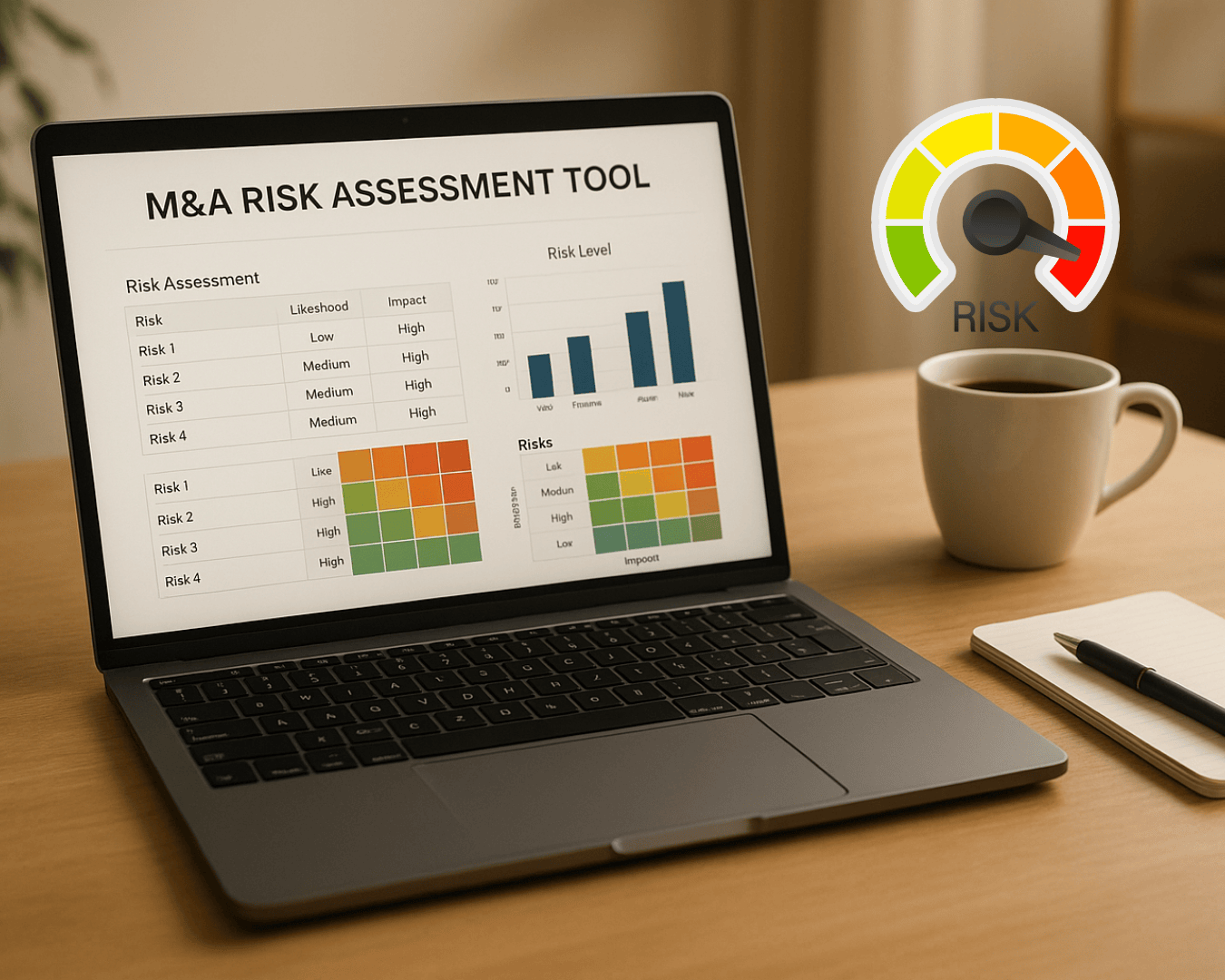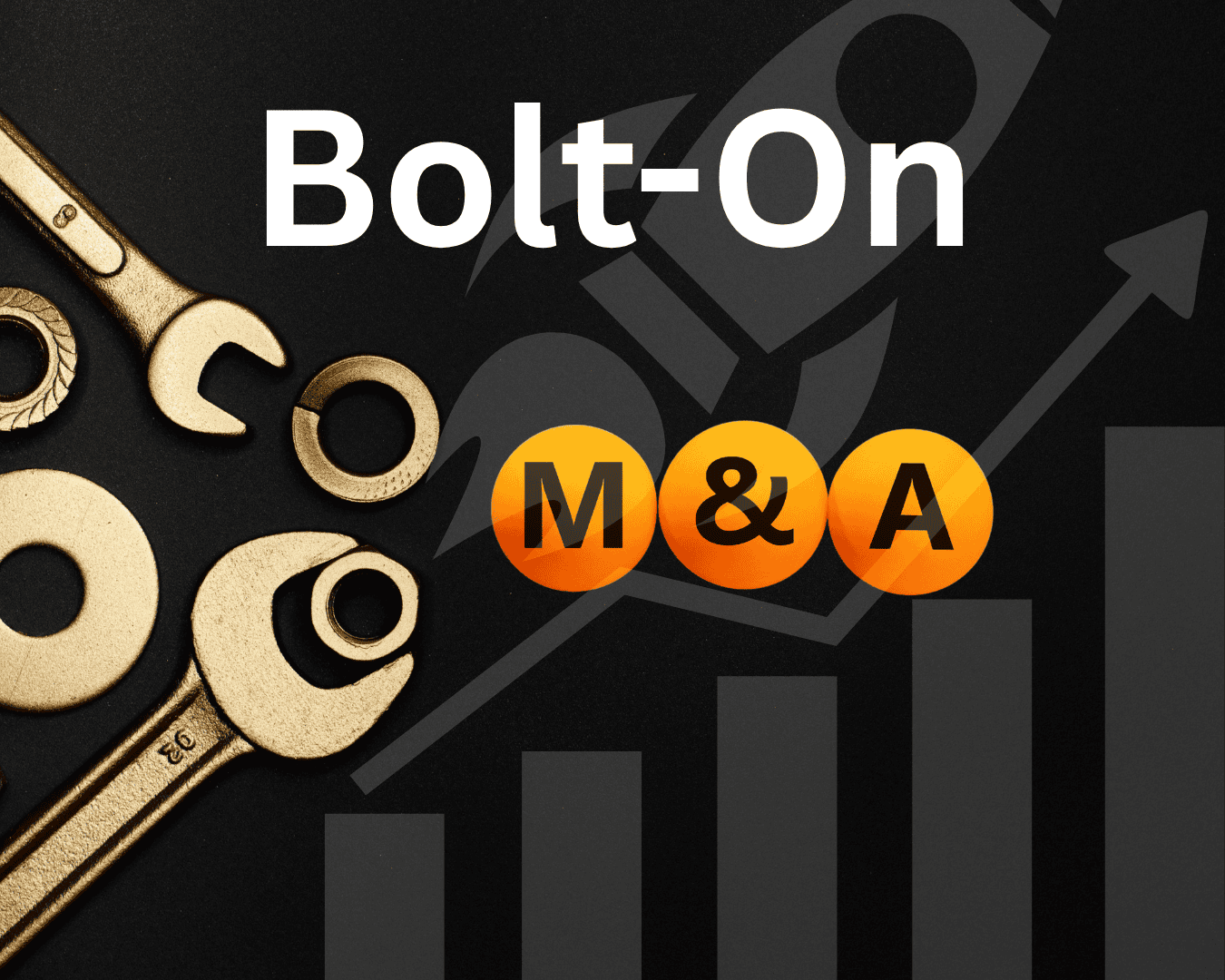Tax due diligence is essential for successful mergers and acquisitions (M&A), especially for small and medium-sized businesses (SMBs). It helps identify tax risks, hidden liabilities, and compliance gaps that could derail a deal. Without proper due diligence, buyers may inherit costly tax issues, while sellers risk losing deal value. Here's what you need to know:
- What It Is: A detailed review of a company's tax history, filings, and obligations at federal, state, and local levels.
- Why It Matters: SMBs often face compliance challenges due to limited resources, aggressive tax strategies, or multi-state operations, increasing risks for buyers.
- Key Areas of Focus: Tax compliance, outstanding liabilities, related party transactions, and transfer pricing.
- Common Risks: Unfiled returns, payroll tax issues, misclassified contractors, and state tax nexus exposure.
- Best Practices: Engage tax advisors early, use technology for efficiency, and establish clear risk management provisions like indemnification clauses or escrows.
Tax due diligence not only protects both parties in a transaction but also sets the stage for smoother post-acquisition operations. Identifying risks early can save time, reduce financial exposure, and ensure compliance moving forward.
📢 Tax Due Diligence: Key Strategies for M&A Success⭐ from Online M&A Courses of "mnainstitute.com"
Core Components of Tax Due Diligence
Tax due diligence is all about digging into compliance, liabilities, and related party transactions to uncover potential risks. By addressing these areas thoroughly, businesses can avoid costly surprises down the road.
Tax Compliance Review Across All Jurisdictions
A comprehensive review of tax compliance involves examining federal, state, and local tax obligations. This includes income taxes, sales taxes, employment taxes, property taxes, and specific industry-related taxes that may apply to the business being evaluated.
For companies operating in multiple states, the complexity increases. Each state has its own tax rules and deadlines. For instance, a manufacturing company with facilities in Texas, Ohio, and California may face varying sales tax regulations, income tax calculations, and employment tax requirements. Missing a filing deadline in just one state can lead to significant financial exposure.
Federal tax filings also deserve close scrutiny, ensuring that deductions and filings are accurate. At the state and local levels, compliance issues can often go unnoticed. Small and mid-sized businesses, in particular, may struggle to keep up with changing rules, such as the 2018 South Dakota v. Wayfair decision, which altered sales tax nexus requirements. Employment tax compliance is another area that demands attention, as penalties add up quickly, and worker misclassification can result in personal liability for business owners.
Once compliance is reviewed, the next step is to uncover any hidden liabilities that could affect the transaction.
Finding Outstanding Liabilities and Exposures
Hidden tax liabilities are one of the biggest risks in mergers and acquisitions. These liabilities might include unfiled returns, unpaid taxes, ongoing audits, or disputed assessments - issues that may not show up on the company’s balance sheet.
To start, obtaining tax clearance certificates helps verify current liabilities. Tax professionals then dig deeper, reviewing correspondence with tax authorities, checking bank records for tax payments, and analyzing the company’s filing history. Unfiled returns, in particular, are a red flag, as they often lead to penalties and interest.
Ongoing audits and extended statute limitations also require careful attention. While most tax returns are final after three years, the window extends to six years for substantial understatements of income and remains open indefinitely for fraudulent or unfiled returns. Seasonal businesses often face timing issues, such as accrued tax liabilities that haven’t yet been paid, which can be identified through a cash flow analysis.
These findings often lead to a closer examination of related party transactions and transfer pricing practices.
Reviewing Related Party Transactions and Transfer Pricing
Tax authorities are paying more attention than ever to related party transactions and transfer pricing. Over 75 countries now require formal transfer pricing documentation. For small and mid-sized businesses (SMBs), these issues often arise in dealings with affiliated entities, family members, or businesses under common control.
The penalties for transfer pricing discrepancies can be harsh, reaching up to 40% of the discrepancy.
For example, SMB acquisitions might involve management fees, shareholder-related rent, or intercompany loans at below-market rates. Take a family-owned distribution business that pays above-market rent to a property company owned by the same family. This setup could shift income between entities, reducing overall tax liability but raising red flags with tax authorities.
To avoid these risks, businesses need contemporaneous documentation proving that related party transactions follow arm’s-length standards. Without this, SMBs could face significant exposure during audits.
The review process should thoroughly examine intercompany agreements, pricing methodologies, and supporting documentation for all related party transactions. Tax professionals compare these transactions to market rates and assess whether they serve legitimate business purposes beyond tax planning.
Special attention is also needed for cost-sharing arrangements and intellectual property transfers between related entities. For instance, a tech company licensing its in-house software to affiliates at below-market rates could face major adjustments if the IRS determines the fees should have been higher.
International related party transactions add even more layers of complexity, involving transfer pricing rules, tax treaties, and foreign reporting requirements. Even domestic businesses can encounter international exposure through foreign subsidiaries, joint ventures, or licensing arrangements that weren’t properly structured for tax purposes.
Finally, the review should determine whether related party transactions could lead to constructive dividend treatment or other negative tax outcomes. For example, loans from corporations to shareholders without proper documentation or market-rate interest could be reclassified as distributions, creating unexpected tax liabilities for both the corporation and the shareholder.
Common Tax Risks and Warning Signs
Tax due diligence often uncovers risks that can significantly affect the success of a deal and the future operations of the business. Spotting these issues early provides an opportunity to manage risks effectively and structure deals more strategically.
Typical Tax Risks in SMB Acquisitions
Small and medium-sized businesses (SMBs) face unique tax challenges, many of which become apparent during acquisitions. One of the most common issues is underreporting payroll, sales, and pension taxes. SMBs often struggle to keep up with evolving regulations, especially when operating across multiple jurisdictions. These compliance gaps may remain hidden until a thorough due diligence process brings them to light.
Another major concern is financial statement misrepresentation. This can take various forms, such as prematurely recognizing revenue, capitalizing expenses that should be deducted immediately, or hiding liabilities. While these practices may inflate short-term profitability, they expose buyers to significant tax risks down the line.
"When you acquire a company, you inherit their entire tax history and become liable for the 'sin of the past'." - Diana Oprescu Stoica, Senior Manager at PwC
State and local tax exposure is another frequent issue. As businesses expand, they may inadvertently fail to file returns or collect sales tax in states where they establish a tax nexus. Keeping track of these obligations can be particularly challenging for SMBs.
For companies with international operations, complications can arise when they employ remote workers or contractors in foreign jurisdictions. Without proper tax planning, these arrangements may result in unexpected employment tax obligations, payroll requirements, and other local tax issues.
Warning Signs and Their Impact
Certain red flags during due diligence demand immediate attention. For example, disorganized financial records often indicate deeper tax problems and may reflect poor management practices overall.
"The IRS can assess tax liabilities for a company all the way back to three years from the due date of a tax return." - Diana Oprescu Stoica, Senior Manager at PwC
These warning signs can have serious financial consequences, potentially putting deals at risk. Here’s a closer look at some common red flags, their impact, and strategies to address them:
| Tax Red Flag | Potential Financial Impact | Mitigation Strategy |
|---|---|---|
| Expense Deduction Risks (e.g., personal expenses deducted as business expenses) | Increased tax liabilities if deductions are disallowed | Engage tax experts to review deductions and quantify risks |
| Contractor Misclassification (mislabeling employees as independent contractors) | Penalties and back taxes for employment and payroll obligations | Verify contractor classifications and ensure compliance across jurisdictions |
| Lost Tax Footprint Tracking (failure to monitor nexus) | Unfiled returns and back-tax liabilities | Conduct a nexus review across all business locations |
| State and Local Tax Exposure (unintentional nexus creation) | Unexpected liabilities that could derail the deal | Use Voluntary Disclosure Agreements to address non-compliance |
| Poor Financial Record-Keeping | Reduced buyer confidence, leading to deal renegotiation or termination | Perform regular audits to identify and resolve issues before selling |
One of the most complex challenges is nexus exposure, which can occur when businesses operate across state lines through e-commerce, remote employees, or traveling sales teams. Companies may unintentionally trigger filing requirements in new jurisdictions, resulting in years of non-compliance, penalties, and interest.
Timing is critical when addressing these risks. Problems identified early in due diligence can often be mitigated through negotiation, escrow arrangements, or voluntary disclosure agreements. However, if discovered later in the process - or worse, after the deal closes - they can lead to disputes or even derail the transaction entirely.
Buyers pursuing stock purchases face heightened risk because they inherit the target company’s entire tax history. While asset purchases provide some protection by limiting exposure to certain obligations, such as sales and transfer taxes, buyers must remain vigilant. Proactive tax planning and risk management are essential to navigating these challenges successfully.
Identifying these risks early is key to setting the stage for effective tax due diligence practices.
Best Practices for Tax Due Diligence
Navigating tax due diligence effectively requires a mix of expert insights, cutting-edge technology, and solid risk management. Taxes at federal, state, and local levels can influence 30% to 40% of total M&A deal finances, making it essential to follow established practices to avoid unwelcome surprises during transactions.
Working with Tax Advisors Early
Bringing in tax advisors early in the process can help align strategies with business objectives and tackle potential complexities before they escalate. Often, hidden liabilities only come to light during a professional review. Skilled advisors can help uncover and address these "tax surprises" that might jeopardize a deal.
"Tax due diligence serves as a critical lens through which we discover and quantify potential tax risks in M&A transactions. These findings often impact the deal structure, escrow holdbacks, indemnification, and determine what conditions are needed to resolve tax issues."
– Bob Houston, Tax and M&A Leader
For sellers, early consultation ensures they maximize their value and avoid post-closing tax issues. Choosing advisors with deep M&A experience is key. Look for professionals who understand tax and accounting claims, dispute resolution, state and local tax concerns, U.S. and international tax rules, and indemnification strategies. Additionally, advisors who stay ahead of proposed tax changes while maintaining a solid grasp of historical regulations can provide invaluable guidance.
This proactive approach lays the groundwork for incorporating technology into the due diligence process.
Using Technology for Due Diligence
Modern technology plays a pivotal role in streamlining M&A due diligence. Tools like secure data rooms and centralized tracking platforms simplify document sharing and collaboration, while pipeline management tools help track every aspect of the deal.
Technology addresses many common challenges in due diligence. Secure data rooms replace disorganized email chains, ensuring sensitive documents remain protected. Automated workflows help manage document requests, monitor progress, and maintain audit trails. These tools enable real-time collaboration between tax advisors, legal teams, and deal stakeholders, reducing delays and minimizing miscommunications.
Once the data is securely organized, the focus shifts to managing identified risks through well-structured provisions.
Structuring Risk Management Provisions
After identifying tax risks, it’s crucial to establish protections that allocate responsibility and minimize financial exposure. Risk management provisions provide financial safeguards, helping buyers limit their exposure while giving sellers clarity about their obligations.
Key tools for managing tax risks include indemnification clauses, escrow arrangements, and purchase price adjustments. Indemnification clauses should clearly outline which party is responsible for pre-closing liabilities, specify time limits for claims, and establish procedures for resolving disputes. Escrow arrangements secure a portion of the purchase price to cover potential liabilities, with escrow amounts and durations (typically 12 to 36 months) reflecting the scale of the risks involved.
Purchase price adjustments offer another way to handle tax risks, allowing for economic adjustments based on how tax issues are resolved. For particularly complex situations, such as those involving significant state and local tax exposures, Voluntary Disclosure Agreements can be negotiated. These agreements allow companies to address non-compliance proactively, often with reduced penalties and shorter look-back periods.
Clear and open communication about identified risks and proposed solutions helps build trust among all parties, ensuring everyone understands their responsibilities before and after closing.
sbb-itb-a3ef7c1
Post-Transaction Tax Planning and Compliance
After completing thorough pre-transaction due diligence, the next step is to focus on post-transaction planning. This involves creating a solid tax framework that not only meets compliance requirements but also supports the long-term goals of the business. By leveraging insights gained during due diligence, this phase ensures the foundation for sustainable growth is in place.
Addressing Tax Issues Found During Due Diligence
Any tax issues uncovered during the due diligence process should be resolved as soon as the transaction closes. This might include filing overdue tax returns, settling outstanding liabilities, or fixing compliance gaps. Collaborating with tax professionals to implement corrective measures is essential to prevent these problems from escalating or leading to penalties down the road.
Optimizing the Tax Structure of the New Entity
Post-acquisition tax planning should focus on aligning the new entity’s structure with its future objectives. This could involve reorganizing the company, revisiting tax elections, and standardizing accounting practices to ensure smoother operations. Additionally, evaluating state tax obligations and exploring potential incentives can help create a more efficient and forward-looking tax strategy.
Ensuring Ongoing Compliance and Monitoring
Long-term success hinges on maintaining strong systems for tax compliance. Automated tools can be invaluable for tracking deadlines and staying on top of regulatory changes. Regular check-ins with experienced advisors help ensure the tax strategy stays aligned with the company’s evolving needs and any updates in tax laws. Using integrated deal management tools can also simplify compliance tracking and enhance collaboration with advisors throughout this phase.
Key Takeaways for M&A Success
Tax due diligence plays a critical role in ensuring success in mergers and acquisitions (M&A). With 47% of deals failing due to issues uncovered during due diligence, the stakes are high for both buyers and sellers, especially in small business acquisitions.
The process starts with preparation: initiating due diligence early and assembling a skilled team. By combining tax, legal, and financial expertise, teams can thoroughly assess potential risks. This approach goes beyond identifying obvious tax liabilities to uncovering hidden compliance gaps that could lead to significant costs. Adding technology into the mix further enhances efficiency, streamlining the due diligence process.
Modern platforms, like Clearly Acquired, simplify document management and boost collaboration with advisors. Features such as secure data rooms and automated systems reduce manual work and minimize the risk of oversight, making the process more practical for small business transactions.
The benefits of this approach are clear. For example, some buyers have uncovered state tax audit liabilities exceeding $500,000 during due diligence. These findings led to negotiated tax escrows and purchase price adjustments, which protected buyers from future exposure while allowing deals to move forward with a clear allocation of risks.
Comprehensive tax reviews benefit both parties involved. Sellers who address potential issues proactively can avoid buyer pushback, while buyers gain confidence and reduce the risk of unexpected costs after the deal closes. Thorough reviews also uncover hidden liabilities across jurisdictions and tax types that could significantly impact the transaction.
The insights gained during pre-deal due diligence don't just stop there. They lay the groundwork for post-transaction success by ensuring prompt resolution of identified issues and establishing robust compliance systems. These systems not only help manage risks but also support long-term growth by optimizing the tax structure of the newly acquired business.
For entrepreneurs and investors exploring small business acquisitions in the U.S., tax due diligence is more than just a safeguard. When done thoroughly and with the right tools and expertise, it turns potential deal-breakers into manageable risks, paving the way for a successful and sustainable post-acquisition journey.
FAQs
How can small and medium-sized businesses stay compliant with state tax laws during an M&A transaction?
Staying Compliant with State Tax Laws in M&A Transactions
When navigating an M&A transaction, small and medium-sized businesses must prioritize state tax due diligence. This process helps uncover potential tax liabilities, nexus concerns, and obligations unique to each state. A clear understanding of how state-specific rules impact the transaction can save businesses from unexpected complications later on.
Partnering with skilled tax advisors is key. These professionals can guide businesses in structuring deals to reduce tax risks, make the most of tax attributes, and adhere to state-specific requirements, including sales and income taxes. Additionally, carefully reviewing nexus standards and sourcing rules can help avoid penalties and ensure operations run smoothly after the deal is finalized.
What risks could arise if hidden tax liabilities are overlooked during an acquisition?
Overlooking potential tax liabilities during an acquisition can leave the buyer facing unexpected financial setbacks. These might include unpaid taxes, penalties, or accumulated interest, all of which can take a serious toll on the deal’s value and the financial stability of the acquiring company.
On top of that, unresolved tax-related issues - like improperly classified workers or unfiled tax returns - could spark legal battles or force expensive renegotiations after the deal is closed. To avoid these pitfalls and ensure the post-acquisition process runs smoothly, thorough tax due diligence is absolutely critical.
How does technology improve tax due diligence in mergers and acquisitions?
How Technology Is Shaping Tax Due Diligence in M&A
Technology is transforming tax due diligence in mergers and acquisitions by making processes faster and more precise. With tools powered by AI and machine learning, vast amounts of financial and tax documents can be analyzed in a fraction of the time it would take manually. This not only cuts down on effort but also helps reduce the chances of errors.
Another key advantage is the ability to perform real-time data analysis, which speeds up the identification of potential risks. This means decisions can be made with more confidence and better information. By automating repetitive tasks and offering deeper insights, these tools free up buyers and sellers to concentrate on the bigger picture - strategic planning and negotiation. The result? A smoother, more efficient transaction process that benefits everyone involved.































.png)








































%20Loan%20Application%20Checklist.png)





































